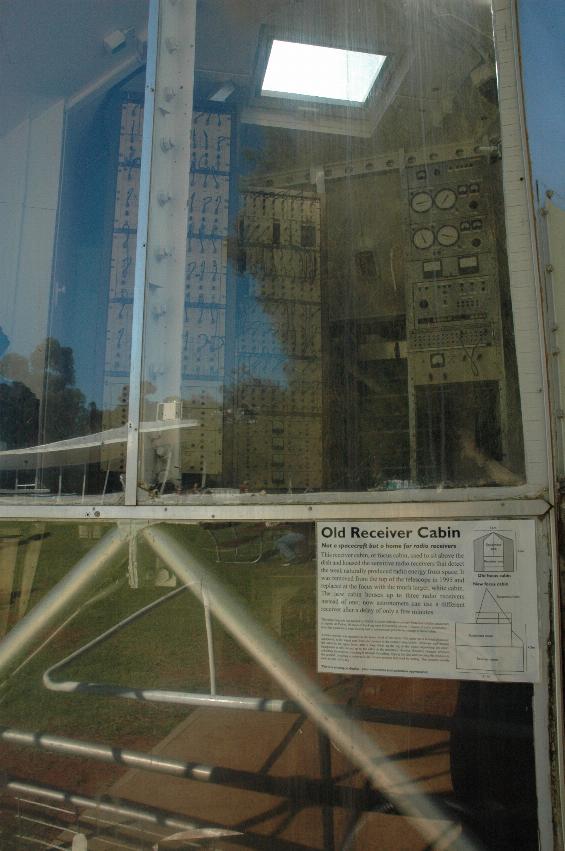Display Board For Old Cabin

This receiver cabin, or focus cabin, used to sit above the dish and housed the sensitive radio receivers that detect the weak naturally produced radio energy from space. It was removed from the top of the telescope in 1995 and replaced at the focus with the much larger white cabin. The new cabin houses up to three radio receivers instead of one; now astronomers can use a different receiver after a delay of only a few minutes.
This major upgrade was funded by NASA, to assist with data recovery from the Galileo spacecraft at Jupiter. At Parkes, 10 hours of tracking were followed by almost 14 hours of radio astronomy - time that would have been entirely lost to astronomers prior to the change of focus cabin.
A radio receiver was mounted in the lower level of the cabin. The upper level housed electronic equipment, in the signal path from the receiver to the control room below. Telescope staff entered the cabin in the upper level, after a long climb up the leg of the tripod supporting the cabin. Equipment is still carried up to the cabin in the motorised elevator. Receiver changes involved unbolting the receiver, winching it through the ceiling, tipping the dish and lowering the receiver to the ground. Installng a receiver is the reverse process followed by testing. This process took at least half a day.